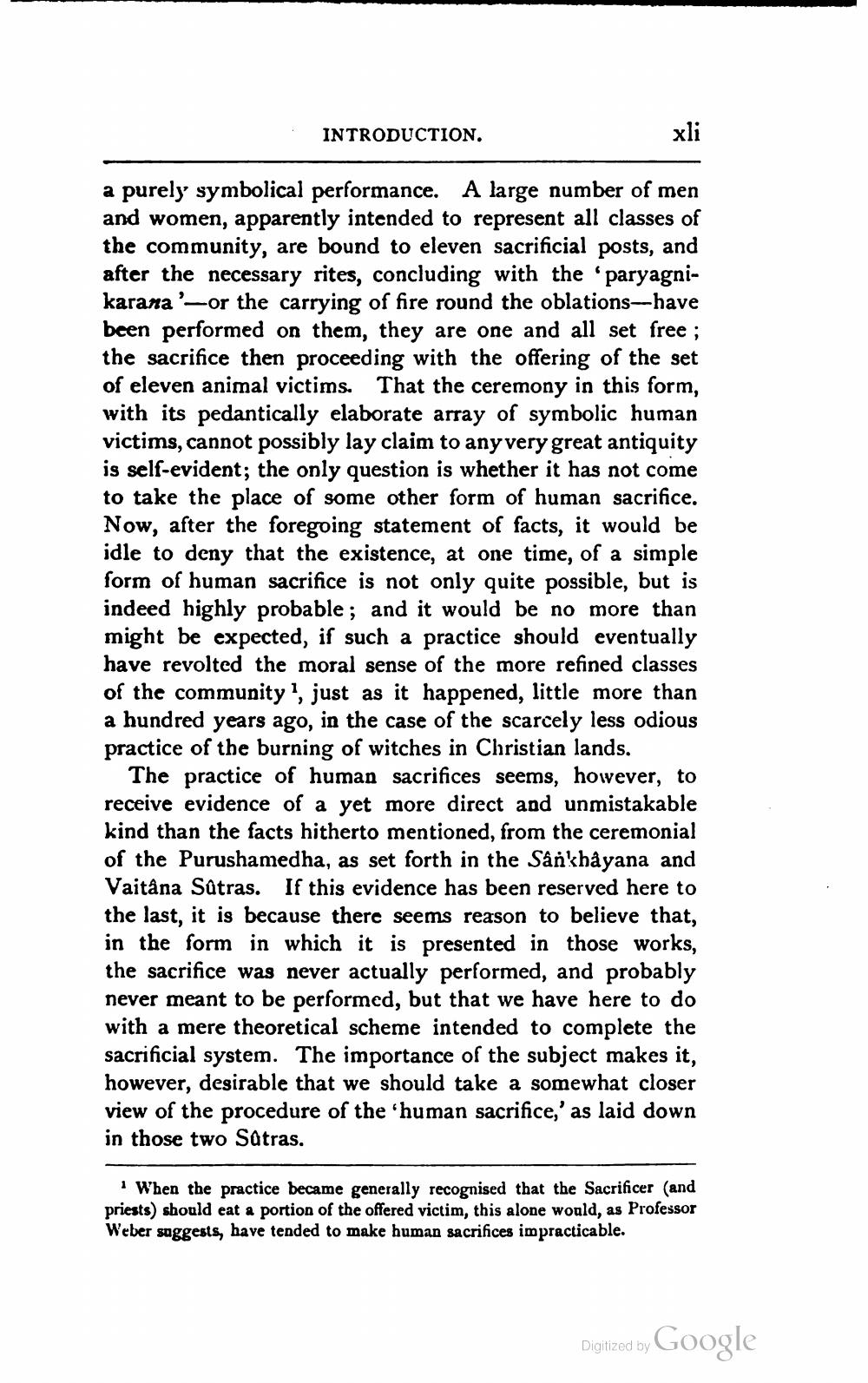________________
INTRODUCTION.
xli
a purely symbolical performance. A large number of men and women, apparently intended to represent all classes of the community, are bound to eleven sacrificial posts, and after the necessary rites, concluding with the 'paryagnikarana '-or the carrying of fire round the oblations--have been performed on them, they are one and all set free ; the sacrifice then proceeding with the offering of the set of eleven animal victims. That the ceremony in this form, with its pedantically elaborate array of symbolic human victims, cannot possibly lay claim to any very great antiquity is self-evident; the only question is whether it has not come to take the place of some other form of human sacrifice. Now, after the foregoing statement of facts, it would be idle to deny that the existence, at one time, of a simple form of human sacrifice is not only quite possible, but is indeed highly probable; and it would be no more than might be expected, if such a practice should eventually have revolted the moral sense of the more refined classes of the community, just as it happened, little more than a hundred years ago, in the case of the scarcely less odious practice of the burning of witches in Christian lands.
The practice of human sacrifices seems, however, to receive evidence of a yet more direct and unmistakable kind than the facts hitherto mentioned, from the ceremonial of the Purushamedha, as set forth in the Sânkhayana and Vaitâna Sûtras. If this evidence has been reserved here to the last, it is because there seems reason to believe that, in the form in which it is presented in those works, the sacrifice was never actually performed, and probably never meant to be performed, but that we have here to do with a mere theoretical scheme intended to complete the sacrificial system. The importance of the subject makes it, however, desirable that we should take a somewhat closer view of the procedure of the human sacrifice,' as laid down in those two Satras.
When the practice became generally recognised that the Sacrificer (and priests) should eat a portion of the offered victim, this alone would, as Professor Weber suggests, have tended to make human sacrifices impracticable.
Digitized by Google




